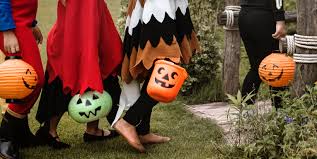From over the top fancy dress costumes and Halloween yard displays to candy corn mania, there’s no denying that Halloween is a big event in the States.
But did you know that Halloween didn’t originate in the States? In fact, the history of Halloween begins thousands of years to the Celtic celebration of Samhain, it is a Gaelic festival marking the end of the harvest season and the beginning of winter or the “darker half” of the year. It is also believed to be a time when the veil between the living and the dead is the thinnest, and when humans could communicate with those beyond the grave.
But how exactly does all this started?
Let’s travel back in time to discover how some of the very first spooky celebrations of Halloween looked like.
Halloween’s Celtic Origins
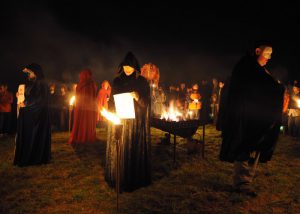
The tradition originated with the ancient Celtic festival of Samhain, when people would light bonfires and wear costumes to ward off ghosts. In the eighth century, Pope Gregory III designated November 1 as a time to honor all saints. Soon, All Saints Day incorporated some of the traditions of Samhain. The evening before was known as All Hallows Eve, and later Halloween. Over time, Halloween evolved into a day of activities like trick-or-treating, carving jack-o-lanterns, festival get together, donning costumes, and eating treats.
All Saints’ Day

On May 13, 609 A.D., Pope Boniface IV dedicated the Pantheon in Rome in honor of all Christian martyrs, and the Catholic feast of All Martyrs Day was established in the Western church. Pope Gregory III later expanded the festival to include all saints as well as all martyrs and moved the observance from May 13 to November 1.
The Influence of Christianity
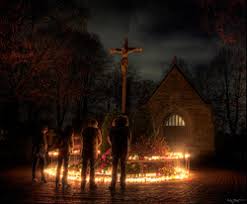
By the 9th century, the influence of Christianity had spread into Celtic lands, where it slowly blended with and supplanted older Celtic rites. In 1000 A.D., the church made November 2 All Souls’ Day, a day to honor the dead. It’s widely believed today that the church was attempting to replace the Celtic festival of the dead with a related, church-sanctioned holiday.
All Souls’ Day
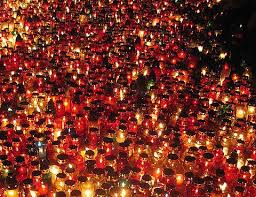
All Souls’ Day was celebrated similarly to Samhain, with big bonfires, parades, and dressing up in costumes as saints, angels, and devils. The All Saints’ Day celebration was also called All-hallows or All-hallowmas (from Middle English Alholowmesse meaning All Saints’ Day) and the night before it, the traditional night of Samhain in the Celtic religion, began to be called All-Hallows Eve and, eventually, Halloween.
Halloween Comes to America
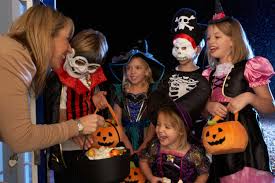
The celebration of Halloween was extremely limited in colonial New England because of the rigid Protestant belief systems there. Halloween was much more common in Maryland and the southern colonies.
As the beliefs and customs of different European ethnic groups and the American Indians meshed, a distinctly American version of Halloween began to emerge. The first celebrations included “play parties,” which were public events held to celebrate the harvest. Neighbors would share stories of the dead, tell each other’s fortunes, dance and sing.
The Irish Touch
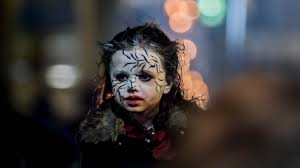
By the middle of the 19th century, annual autumn festivities were common, but Halloween was not yet celebrated everywhere in the country.
In the second half of the 19th century, America was flooded with new immigrants. These new immigrants, especially the millions of Irish fleeing the Irish Potato Famine, helped to popularize the celebration of Halloween nationally.
History of Trick-or-Treating
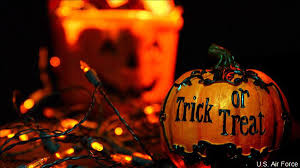
Borrowing from European traditions, Americans began to dress up in costumes and go house to house asking for food or money, a practice that eventually became today’s “trick-or-treat” tradition.
Finding Love In Halloween
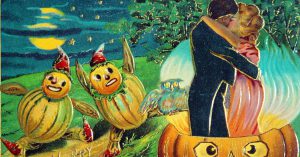
Young women believed that on Halloween they could divine the name or appearance of their future husband by doing tricks with yarn, apple parings, or mirrors.
Halloween Now
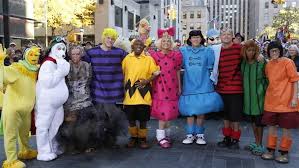
Trick-or-treating skyrocketed in popularity by the 1950s, when Halloween became a truly national event. Today, over 179 million Americans celebrate the holiday — and spend about $9.1 billion on it per year, according to the National Retail Federation.

